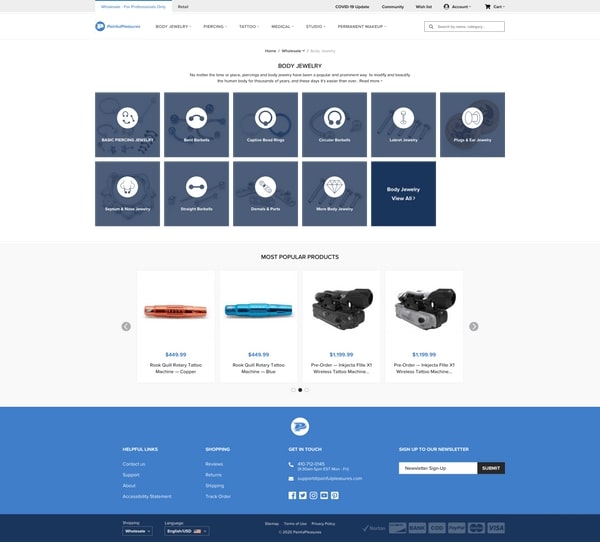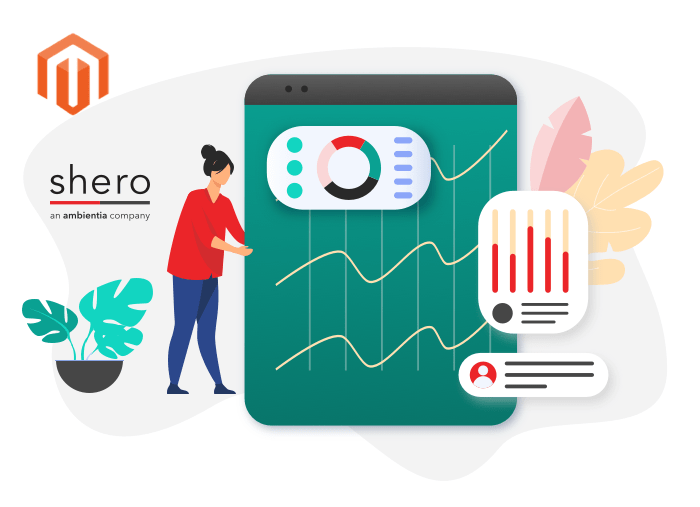Imagine yourself, on a normal day, opening the browser and visiting a website. You will be amazed by its clean layout, cool animations, and impressive visuals. But how does this work and who is behind all this? Simply put, a front-end developer who wrote the CSS/HTML to convert the designs into a beautiful functioning website.
As of January 2020, the web has around 1.5 billion websites. New websites are coming to life every day. Hence the reason for the web developer’s job security.
“Behind every successful man, there is a strong woman.”
“Behind every fascinating website, there is a strong team of front-end developers.”
If we visit a job recruiting website, we see that the job title “Front-end developer” is widely required. But what’s that job precisely? What should we know before we starting trying it? You would possibly think those answers are pretty cut and straight, but they’re anything but that. Front-end development goes through something of a psychological state. In this post, we will try to describe what does it mean to be a front-end developer. This will be based on my experience and also through various conversations, I have had with several other front-end developers. The more people you ask, the more you realize that different people or organizations understand this differently. By understanding how the role of a front-end developer varies from company to company, you will get a better idea of what a front-end developer does.
What is a front-end developer?
A front-end developer is responsible for the website architecture and the way the website elements render to the user interface. Front-end development, which is also considered to be the client-side development, is the practice of producing HTML, CSS, and JavaScript for an internet site or Web Application. In other words, everything that a user can see and interact with is created by a front-end developer, with the help of a back end developer at times of course. The real challenge for this is that we live in an incredibly dynamic environment. New tools are being introduced every day and you have to bear this in mind every time you are building something.
Almost every organization or agency on the market hires front-end developers. So it’s an employment and a typical job title. But what does it mean? Here are some answers we got:
- Front-end development is everything a user sees and interacts with on a website. Everything that has to do with the user interface is a front-end job.
- the term “front-end developer” is relatively newer than the term CSS or HTML. In the beginning, everyone was a webmaster, or as we commonly say now, a full-stack developer. But if the word would have existed, back in the time, this kind of developer would be considered to be a front-end developer.
- A front-end developer thinks of himself as an internet designer and website architect. He doesn’t feel he has the extensive expertise of a back-end developer. However, he still spends all of his time using and interacting with the browser.
So, the job of a front-end developer is closely related to the browser. You should be familiar with the browser, more so than other roles in web development. To note, that, just like the websites, the number of new browsers is also getting bigger and bigger.
Maybe the front-end work is inevitably related to the user interface. A back-end developer doesn’t have to bother with the interface if their job is establishing a database connection. But if you consider yourself a front-end developer, you definitely have to.
There are a ton of different devices and browsers. It’s overwhelming. So we just gave up.
So, a front-end developer:
- It is a profession and a job title.
- You have to work with browsers, devices, and users.
But what skills does a front-end developer needs?
It’s given that you simply can use a computer. There’s also the soft skills of communicating with co-workers. Then, there are language-specific core skills. Finally, there are the bonus skills—all the things that create you.
Core front-end developer skills
The languages a front-end developer has to strongly understand to read, write, and maintain them.
- HTML and CSS. Definitely.
You don’t come upon front-end developers who don’t do those languages. - But what about JavaScript?
It’s fine if you recognize plenty of JavaScript but it’s also fine if you don’t write everything from scratch. Although you can’t be oblivious to an expert, you wish to understand what it can do. Therefore Javascript is a must on the core skills list. - As a front-end developer, you wish to own fundamental knowledge of accessibility as well. This is, after all, about user-facing interfaces.
Bonus front-end developer skills
Obviously, being familiar with web designing tools, like Avocode, Photoshop, or Illustrator, is a big bonus. On your daily job, you will constantly try to turn graphics and designs into a functioning website. The designs are created with these tools and you get familiar with it, in order to make your life easier.
Right now though, it looks like front-end development it’s on a critical position when it comes to its identity. It’s all about JavaScript, which is eating the world.
JavaScript is crazy popular now. It’s inevitable. Yes, it’s the language within the browser, but now it’s the language in numerous other places too.
Front-end Developer Roles
For the sake of the argument, let’s fork the term front-end development. Let’s use UX and JavaScript engineers. Can one person be great at both? Maybe we overwhelm ourselves in two very different directions. JavaScript frameworks are very strange to people with a background in HTML, CSS, and basic interactive JavaScript.
Imagine two people called front-end developers meeting, and having nothing in common to speak about. Some front-end developers don’t want to be configuring build tools. They think of themselves as being at the front of front-end development, whereas others are at the background of front-end development.
This divide is super frustrating to people at once.
Hiring a front-end developer
A new trend is spreading on the web technology these days. A lot of back-end developers are losing their jobs and being replaced by Javascript experts. Plenty of things that before used to be back-end responsibilities are now built and on the front-end area, which also known as the client-side. Component-driven design, site-level architecture, routing, getting data from the back-end, mutating data, integrations with APIs, and managing state—all of these things are now largely a front-end responsibility.
Before, a front-end developer would need a back-end developer’s help to integrate with an API. However, all the latest changes have given the opportunity to the front-end devs to be independent and make them on their own. For example, GraphQL gives them everything they need when it comes to the Data they need.
And all the so-called traditional front-end work, with the user-interface, has not gone away. On the contrary, that has evolved and changed as well.
Career as a front-end developer
Many organizations are advertising to hire a front-end developer. But before they do that, they need to decide whether they need someone to work with Angular, Webpack and GraphQL or HTML, LESS, and page accessibility. All of them are part of the front-end job. And remember, they might as well take the time and learn new technologies. However, when it comes to hiring new people, it has to be related to the talent and skills the people have and how to get the best out of them.
Furthermore, it’s about how specialized your work usually is. Sometimes you’ll be able to specialize in SVG. Other times you’ll be able to specialize in APIs and data.
It is understandable that a developer cannot resolve everything at once. The hiring part is certainly the worst part. You will want to keep it as simple as possible. You need to be very clear about what you want from this front-end developer and look at their past experience.
There’s a huge difference between the CSS markup and the technical tasks. However, this has not prevented the developers from doing a good job, often in both of them.
Despite the differences between them, page speed, user experience, and accessibility are all a front-end developer’s job. Maybe the term “front-end developer” needs rethinking.
Fron-end development use case
Here’s a design of a page. Different front-end developer will see different things here:

- Dev A sees lots of components of various sizes and complexity.
- Dev B’s attention is attracted by all of those images and their impact on page performance.
- Dev C sees HTML structures. It has tables, lists, HTML tags, and starts building the SEO structure.
- Some other dev is looking at the fonts, the shades, and starts calculating the sizes, etc.
- I immediately start considering how the look is meant to show in several screen sizes and device.
- A senior front-end starts thinking of the framework we will need to use for this project. Which one is the best in our case, etc?
“If you’re already a front-end developer, well, pretend you’re also wearing a pirate hat.”
― Ethan Marcotte, Responsive Web Design
To sum up, we see that the role of a front-end developer in 2020 is much more complex than it used to be, and is evolving more and more. The website design revolution has begun some years ago with the Javascript frameworks like AngluarJS, ReactJS and now we’re seeing its effects. If a year ago a front-end developer would be considered the “dummy” developers, that are all about colors and sizes, these days the myth has fallen. Being a front-end web developer today means that you not only create the graphical user interface (GUI) that enables access to the software’s back-end features and capabilities. It means that you are an engineer who is responsible not just for the looks of a website, but for the functionality, speed, and website data connections. Starting a career in front-end development has never been so exciting and rewarding as it is today.
Daniel is a seasoned Tech Lead with expertise in front-end development. With a proven track record and certifications in leading eCommerce platforms like Magento, Shopify, and BigCommerce, Daniel combines technical prowess with innovative thinking to deliver seamless user experiences. His passion for digital solutions and commitment to excellence make him a standout leader in the ever-evolving world of technology.





